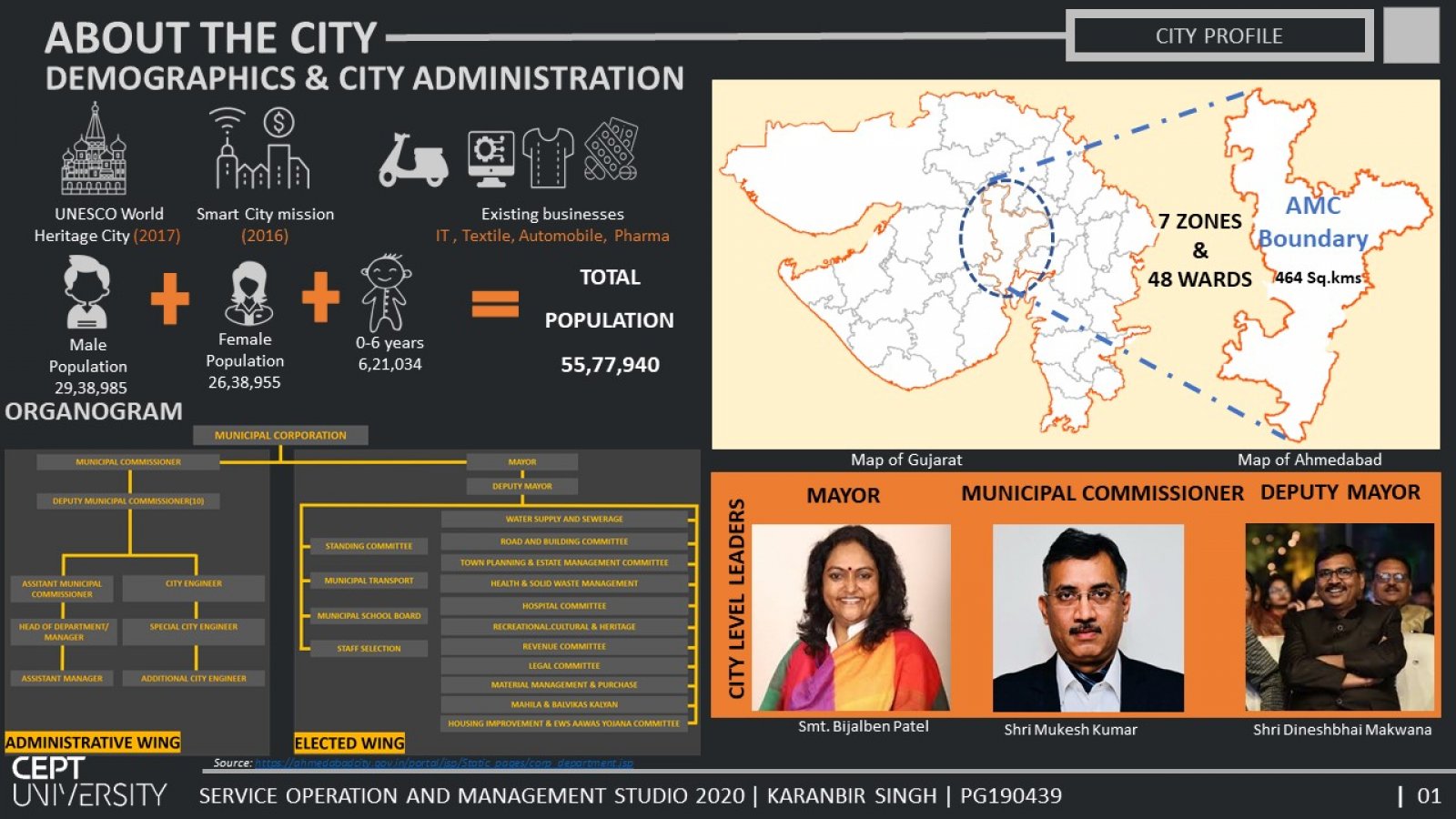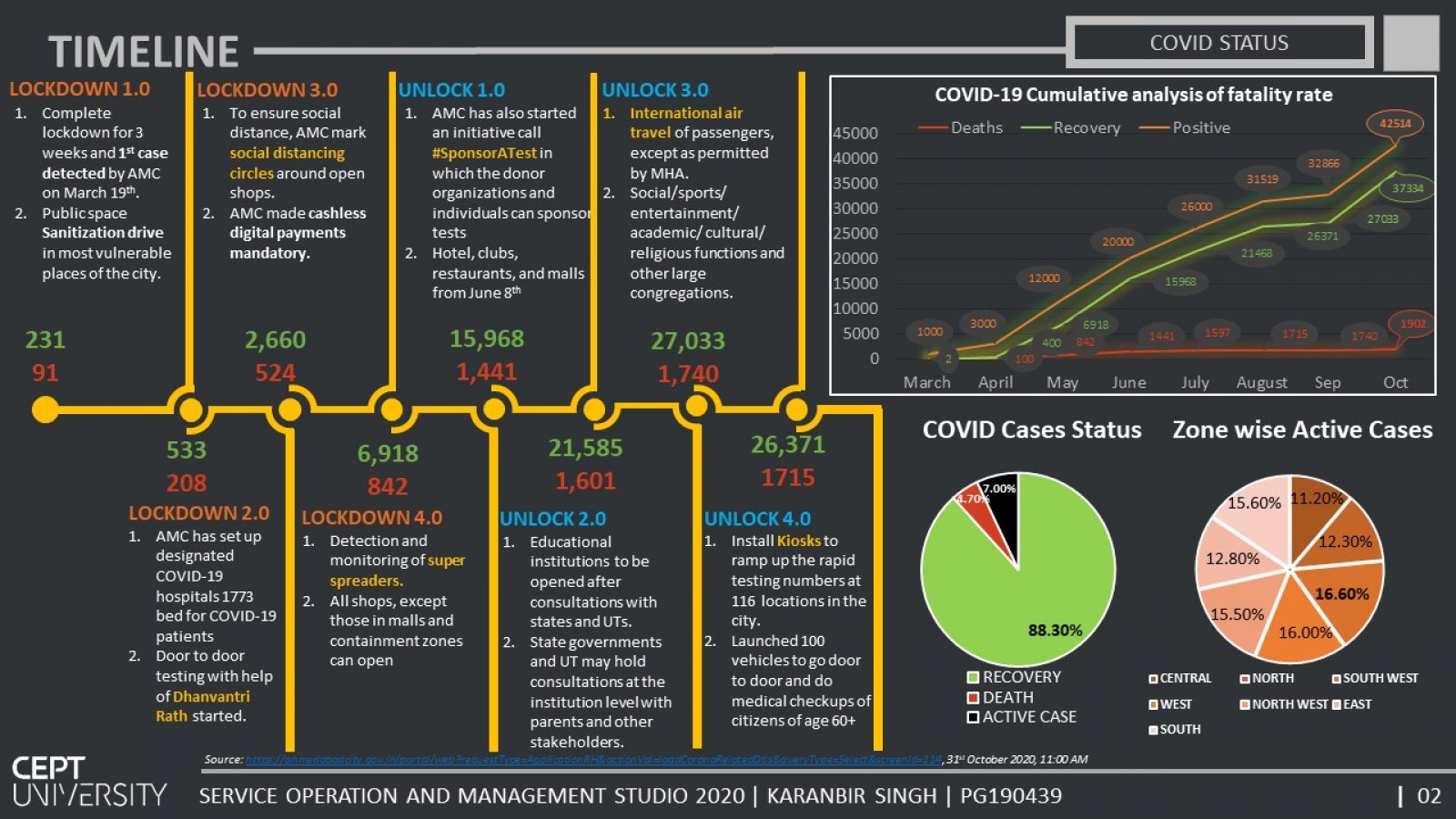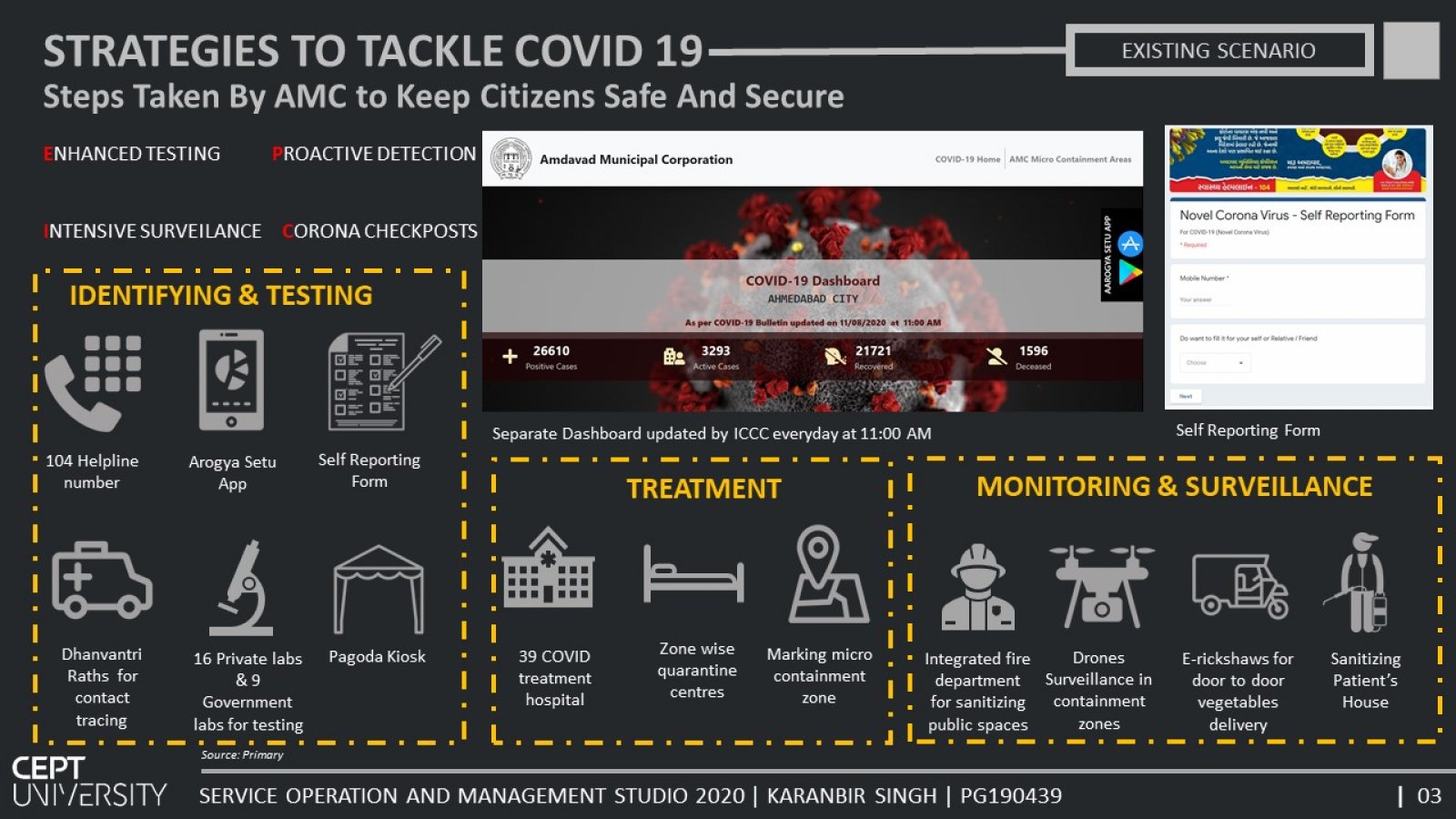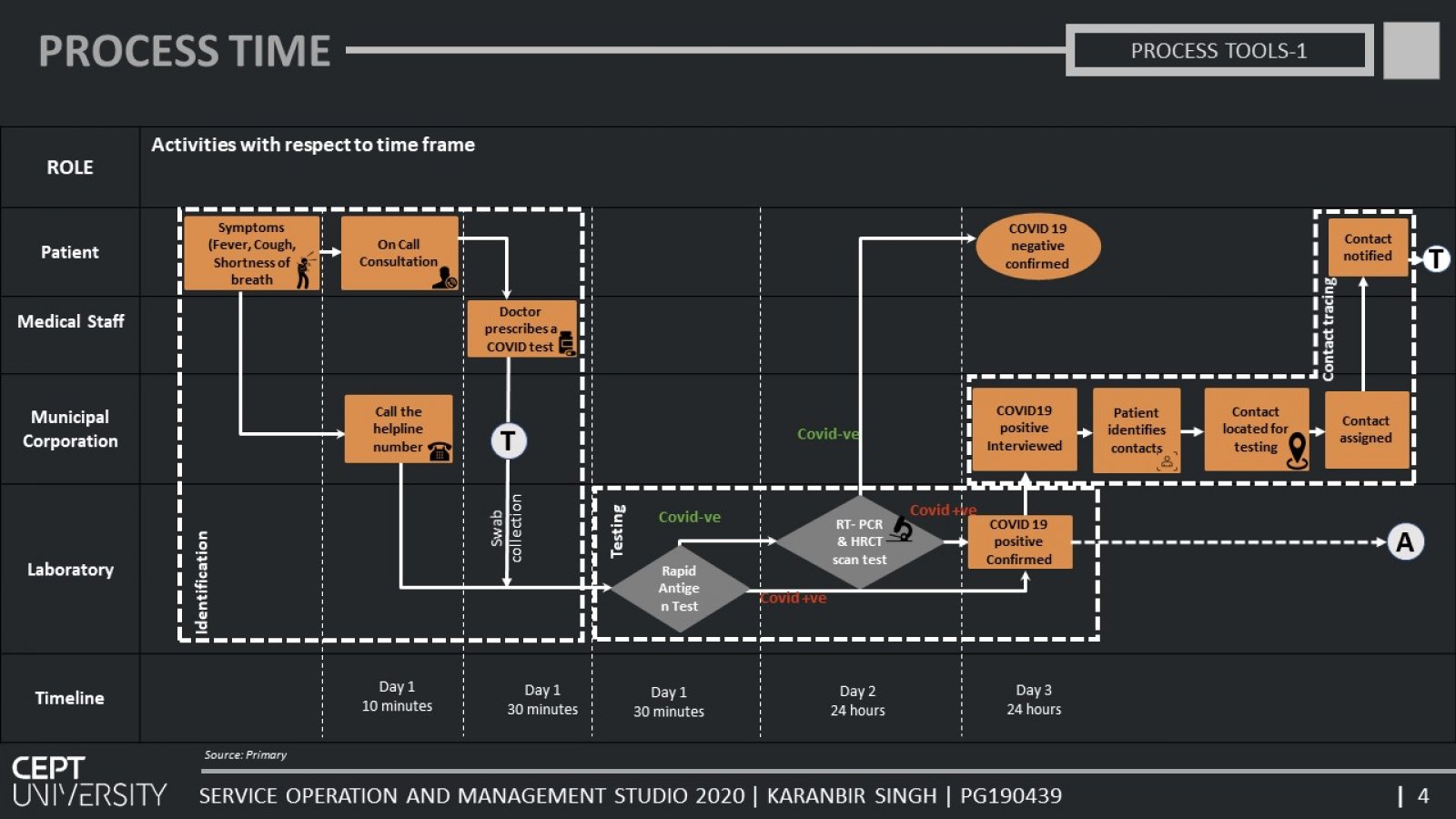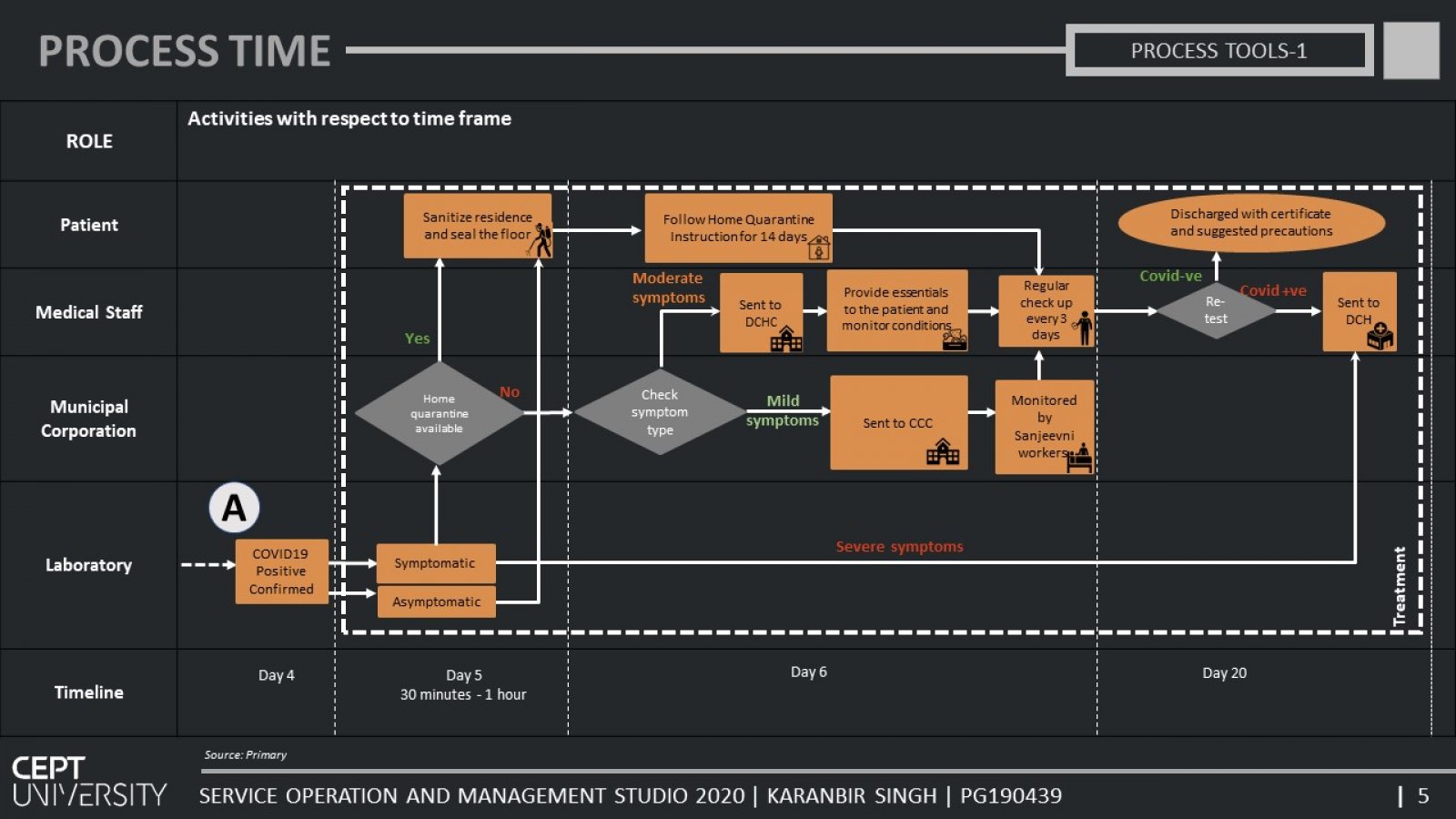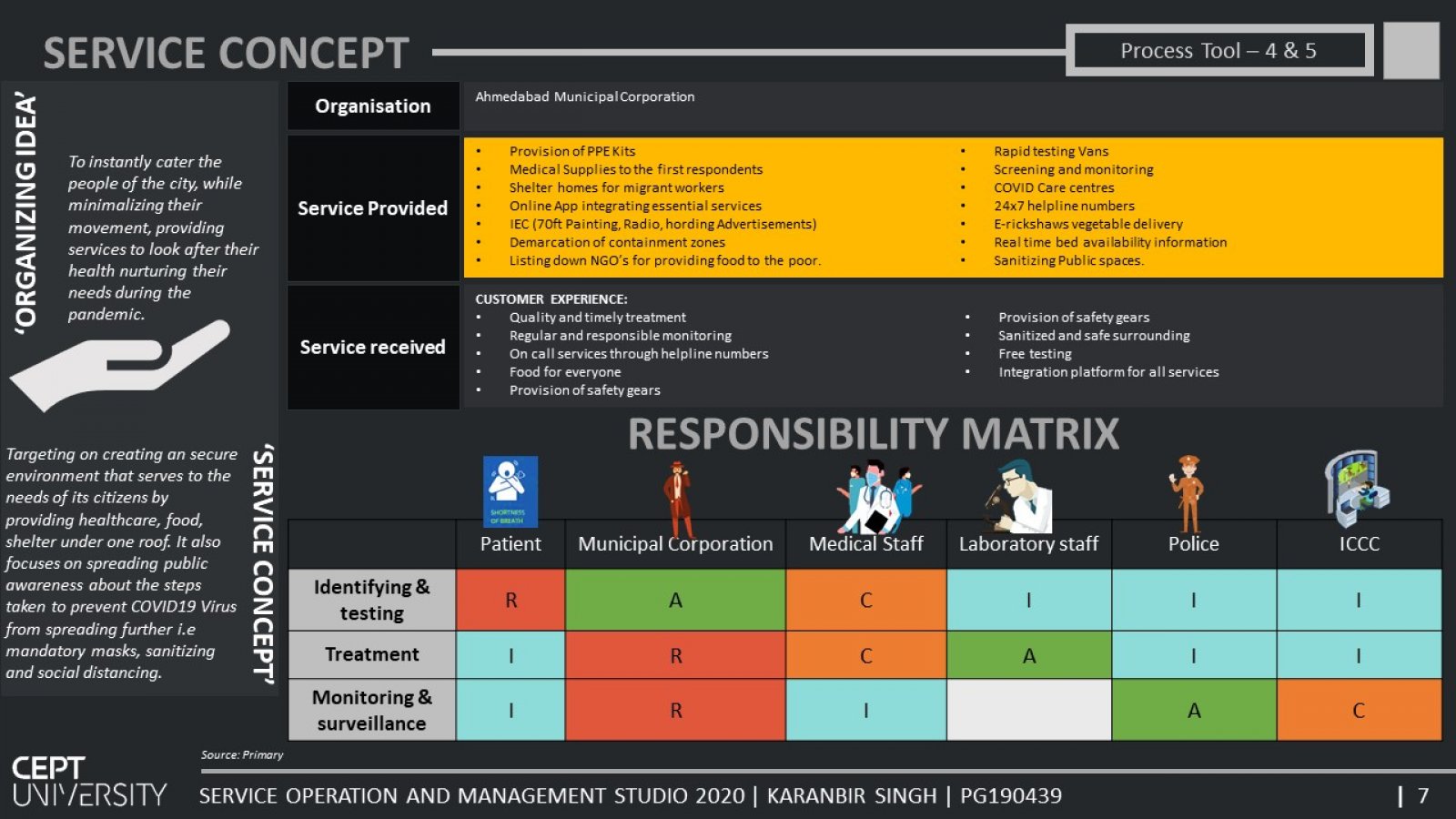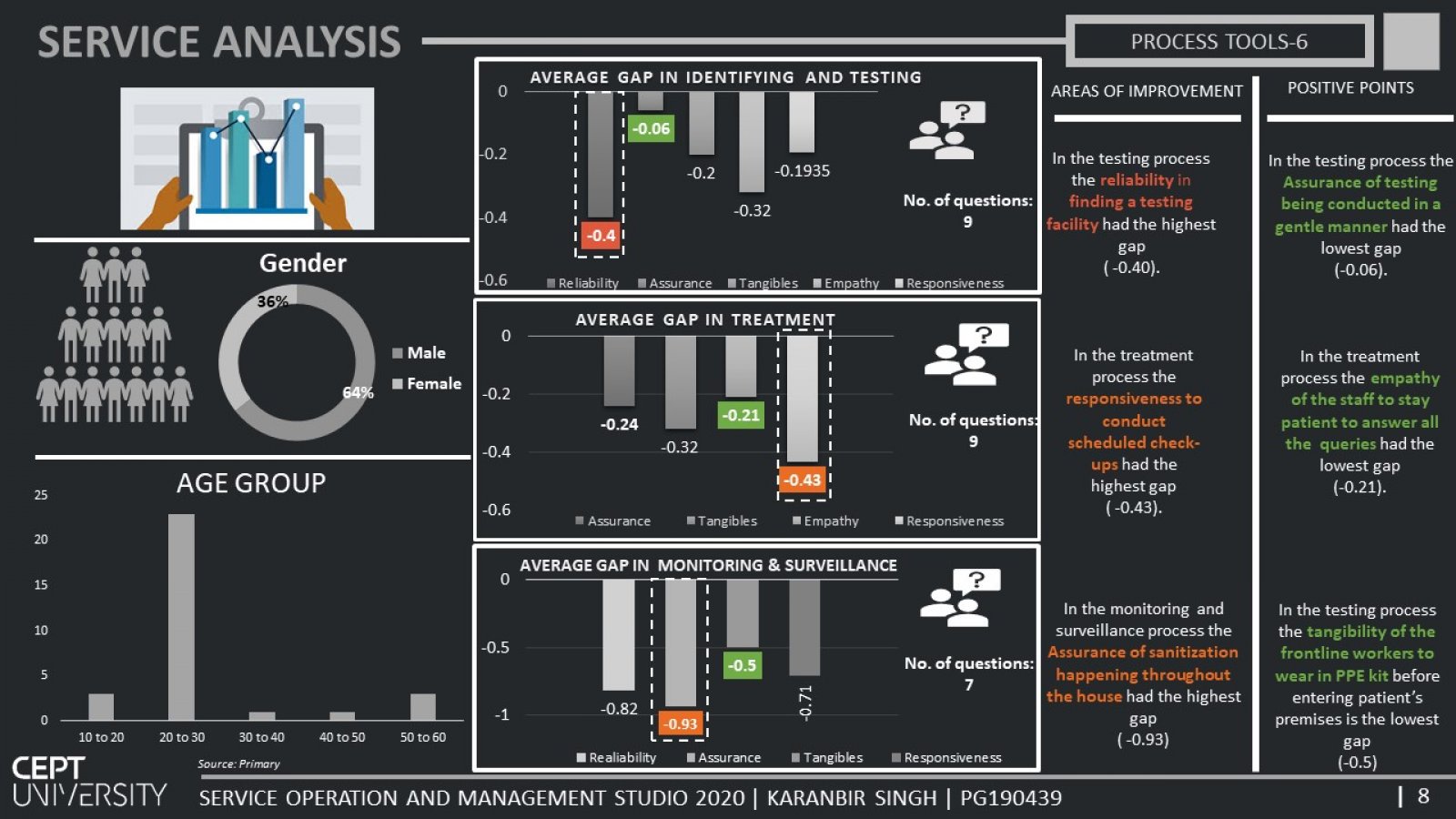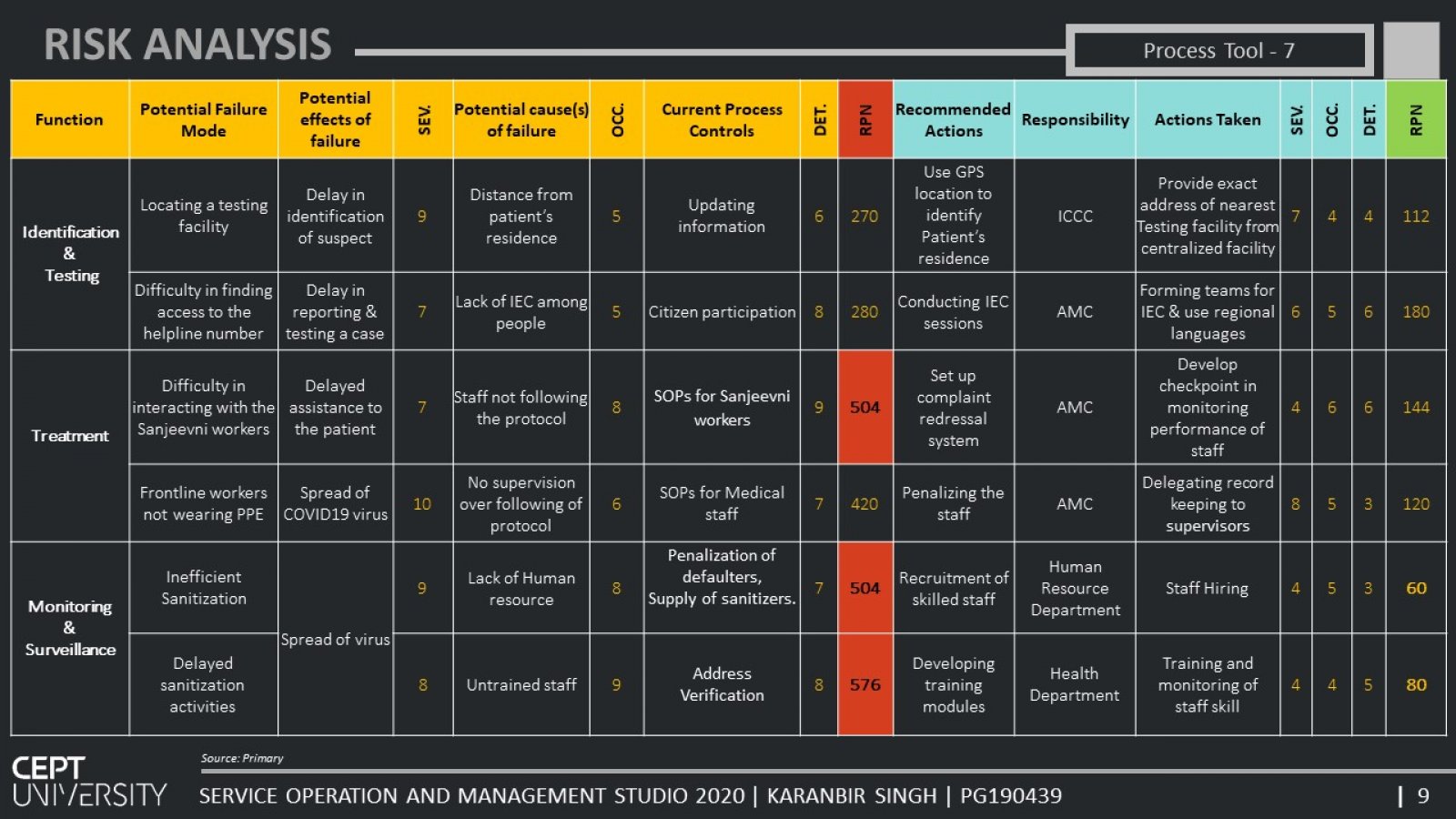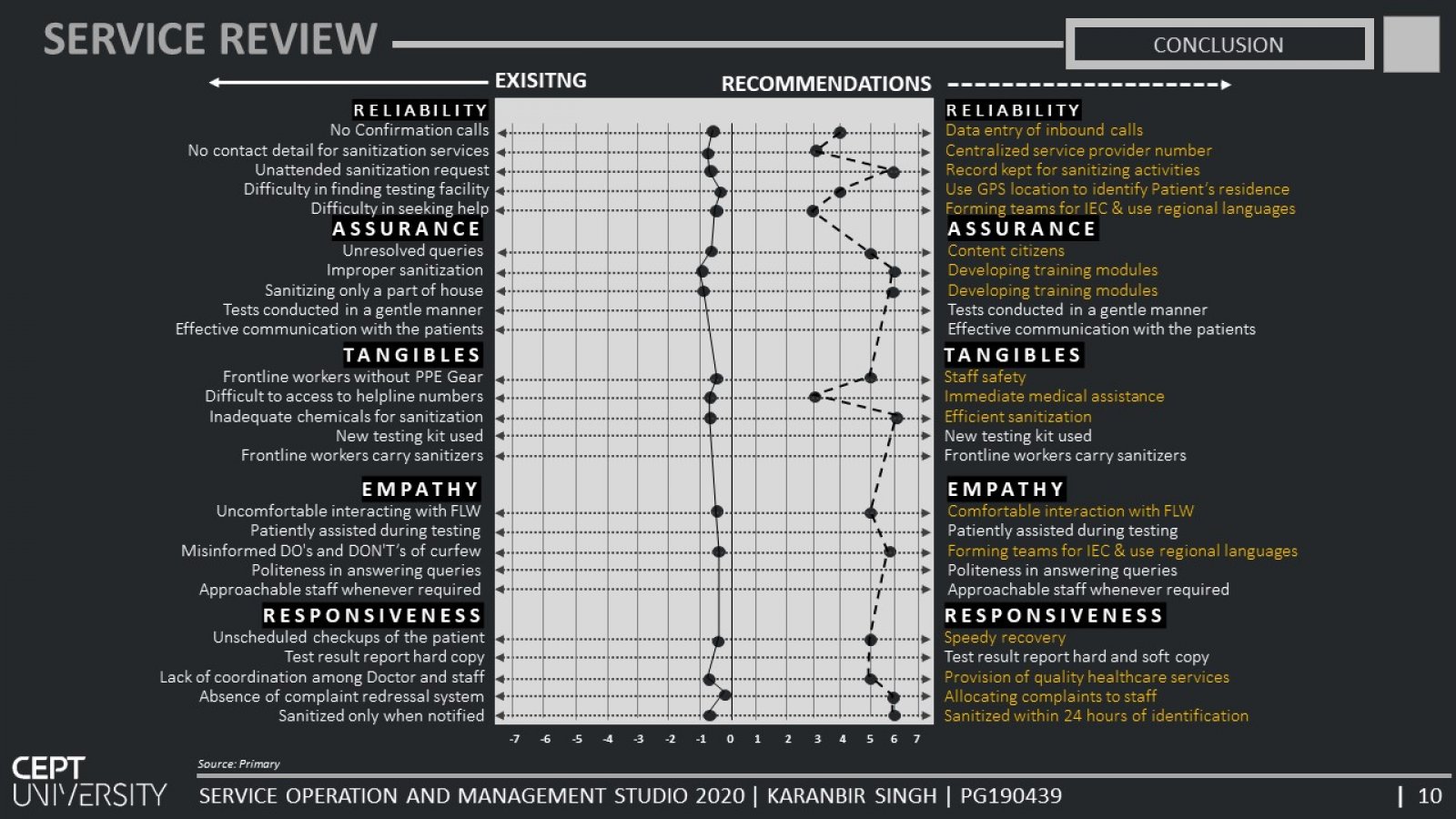Your browser is out-of-date!
For a richer surfing experience on our website, please update your browser. Update my browser now!
For a richer surfing experience on our website, please update your browser. Update my browser now!
The COVID-19 scenario of a city in Ahmedabad is studied which shows the COVID profile with respect to confirmed, recovered and deceased cases. Authorities managing COVID-19 cases in the city has been categorized under 3 processes which are Identification & Testing, Treatment and Monitoring & Surveillance with various help of Service Operations tools. After analyzing the service gaps, suitable recommendations are listed down in the Service Audit Profile for the better management of COVID-19 cases in the city by various stakeholders involved. Tableau: linked: https://public.tableau.com/profile/karanbir.singh7110#!/vizhome/GujaratdataforCOVIDupdated/Story1?publish=yes
View Additional Work